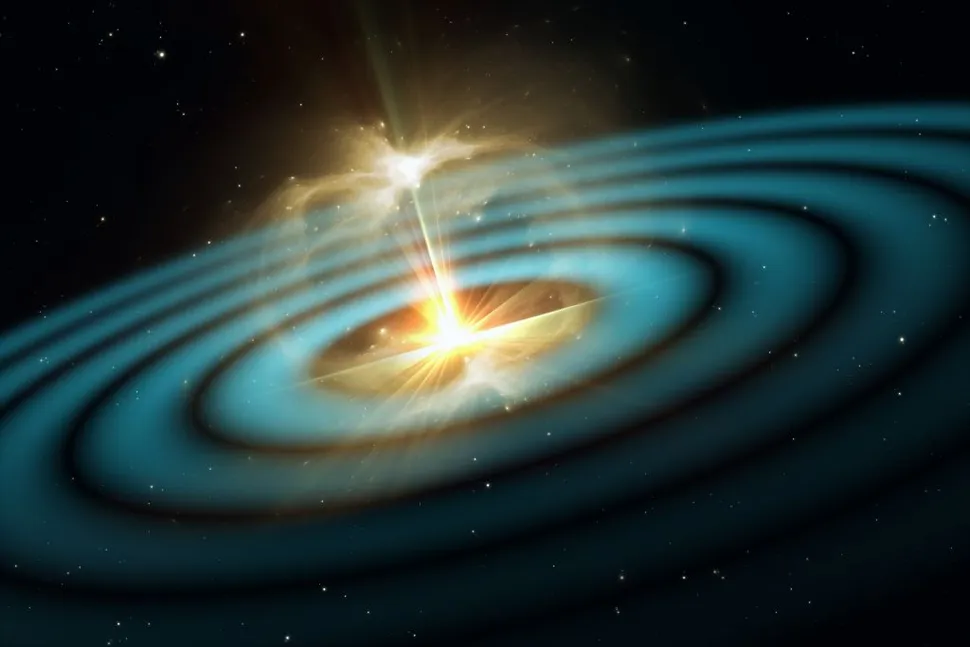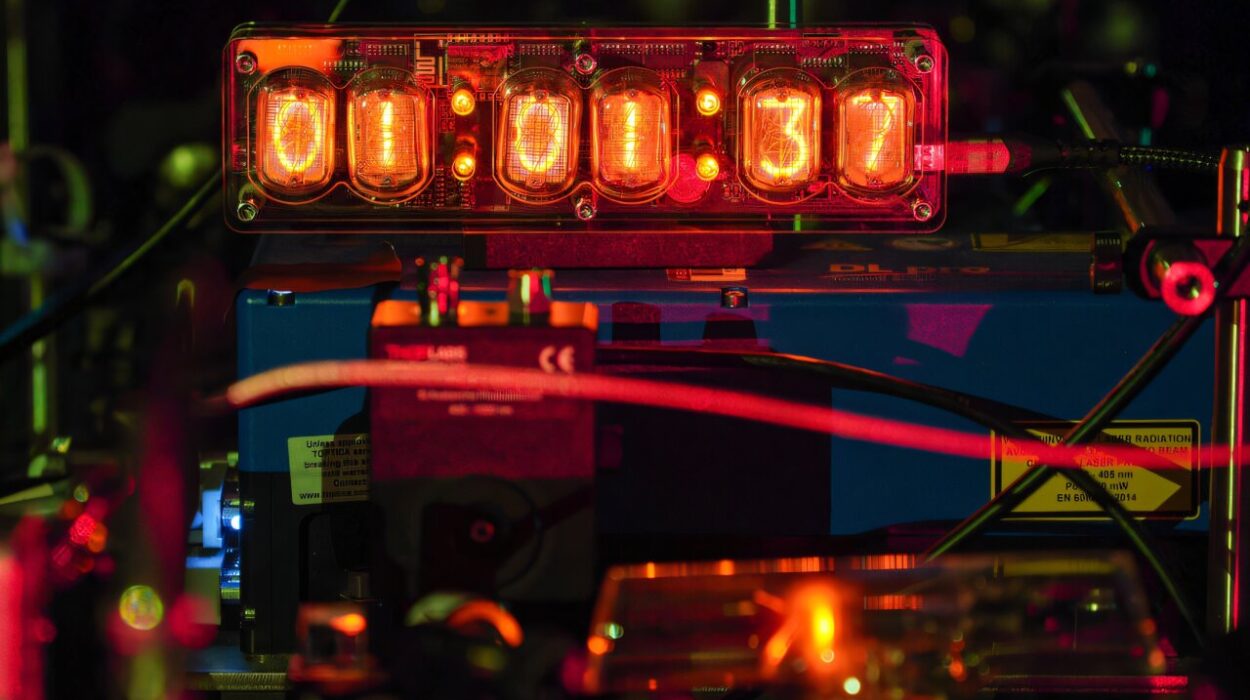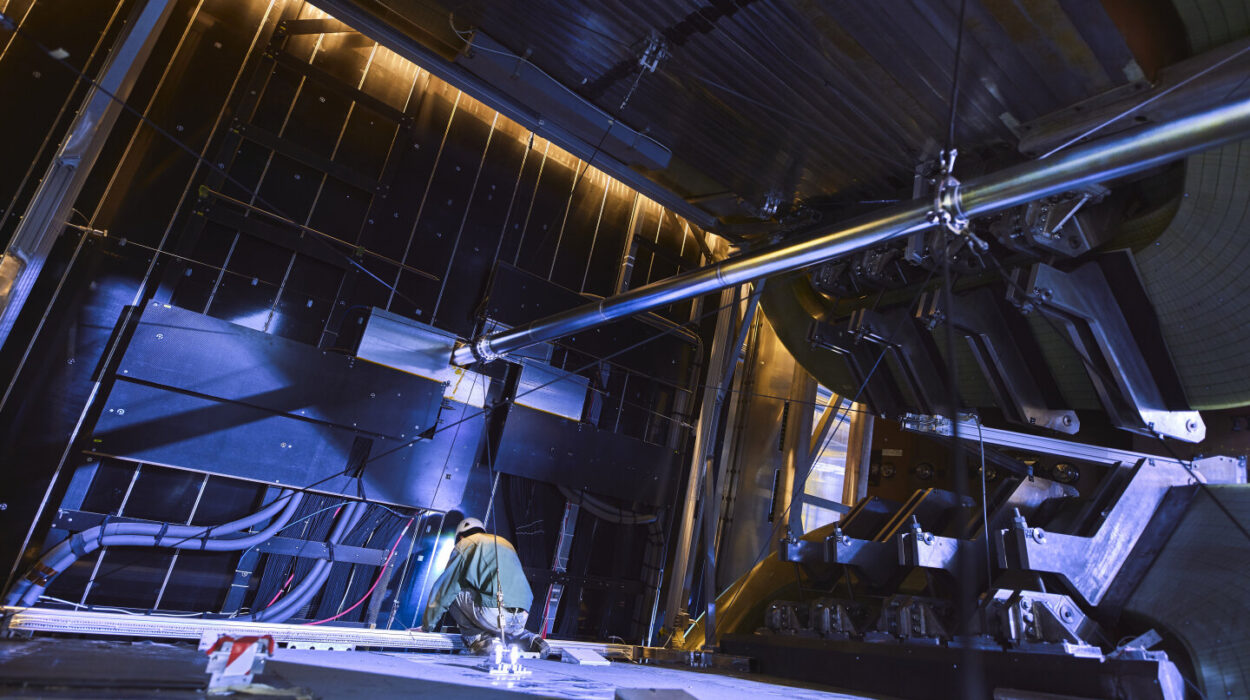Imagine the universe as a vast, invisible lake. Every planet, star, and black hole floating in it are like stones dropped into the water. When two massive objects collide or accelerate, they create ripples across this lake—ripples that stretch, squeeze, and vibrate the very fabric of space and time. These ripples are known as gravitational waves. They are not just theoretical echoes of some cosmic event; they are real, measurable, and have already started reshaping how we understand the universe.
In the realm of astrophysics, gravitational waves are a poetic and profound revelation. Predicted by Albert Einstein over a century ago as a consequence of his General Theory of Relativity, these waves eluded direct detection until the dawn of the 21st century. But once discovered, they opened an entirely new window onto the cosmos—a silent channel through which the universe murmurs its deepest secrets.
This article takes you on a journey through the science, discovery, and mind-bending implications of gravitational waves. What are they really? How are they detected? And why do they matter so much? To understand gravitational waves is to understand not just a feature of space, but space itself—alive, dynamic, and capable of carrying messages from the most cataclysmic events in existence.
The Birth of a Revolutionary Idea
To appreciate the wonder of gravitational waves, we must start at the feet of a scientific giant—Albert Einstein. In 1915, Einstein formulated the General Theory of Relativity, a radical reimagining of gravity. According to Newton, gravity was a force acting at a distance between masses. Einstein saw something deeper: mass and energy warp spacetime itself, and this curvature dictates how objects move. The more massive the object, the more it bends the spacetime around it, much like how a bowling ball placed on a trampoline creates a dip that draws smaller balls toward it.
Out of the complex mathematics of general relativity came a surprising prediction. If a massive object accelerates—say, a pair of neutron stars spiraling toward each other—it would disturb the surrounding spacetime, creating waves that propagate outward at the speed of light. These are gravitational waves.
But there was a catch. These waves would be extraordinarily faint, their effect on Earth imperceptibly small. Einstein himself doubted whether they would ever be detected, calling them “mere mathematical artifacts” rather than physically observable phenomena.
Spacetime: The Cosmic Fabric
Before diving into the nature of gravitational waves, it’s crucial to grasp the concept of spacetime. Think of spacetime as a four-dimensional fabric: three dimensions of space interwoven with one dimension of time. Matter tells spacetime how to curve, and curved spacetime tells matter how to move. This is the heart of general relativity.
Gravitational waves are distortions in this fabric, much like ripples caused by a pebble thrown into a pond. However, unlike water waves that need a medium, gravitational waves are fluctuations of the medium itself. They stretch and compress space in perpendicular directions as they move, changing the distances between points—ever so slightly—as they pass.
This distortion doesn’t occur on a surface or inside a medium. It is spacetime itself undergoing a temporary reshaping. Imagine a perfectly square box of space. As a gravitational wave passes through it, that box might momentarily become a rectangle, then stretch in the other direction, and finally return to normal. This happens without any matter pushing or pulling—just spacetime breathing, in a sense, under the influence of massive celestial motions.
The Elusive Nature of Detection
One of the most stunning aspects of gravitational waves is how difficult they are to detect. The changes they cause are unimaginably tiny. A typical gravitational wave might change the length of a four-kilometer-long detector arm by just one-thousandth the diameter of a proton. That’s like measuring the distance from Earth to the nearest star to within the width of a human hair.
For decades, this sheer subtlety made gravitational waves seem undetectable. But in science, what seems impossible often just requires the right combination of vision, technology, and perseverance. That moment came with the construction of LIGO—the Laser Interferometer Gravitational-Wave Observatory.
LIGO: The Cosmic Eavesdropper
LIGO consists of two massive observatories—one in Hanford, Washington, and the other in Livingston, Louisiana. Each L-shaped facility has arms four kilometers long, within which laser beams travel back and forth. These lasers are carefully tuned to detect the slightest disturbances in space.
The principle behind LIGO is elegantly simple yet devilishly precise. A laser is split into two beams that travel down the arms, reflect off mirrors, and return. Under normal conditions, they cancel each other out perfectly when recombined. But if a gravitational wave passes through, it will stretch one arm and compress the other, changing the distance the light travels and causing the beams to no longer cancel out. This minute difference creates an interference pattern—evidence that spacetime has trembled.
Decades in the making, LIGO became fully operational in the early 2000s but initially detected nothing. Then, after years of upgrades and fine-tuning, history was made.
The Signal Heard Around the Universe
On September 14, 2015, at precisely 5:51 a.m. Eastern Time, both LIGO detectors registered a tiny, synchronous signal—a faint chirp lasting just 0.2 seconds. This chirp was the death cry of two black holes spiraling into each other, located 1.3 billion light-years away. As they merged, they released energy in the form of gravitational waves equal to three solar masses in just a fraction of a second.
The signal matched predictions perfectly. It was the first direct evidence of gravitational waves—and also of binary black hole mergers. When the discovery was announced in February 2016, it made global headlines. Einstein was right. Spacetime can ripple. And we could finally listen.
Why Gravitational Waves Matter
Gravitational waves are not just an impressive technical achievement; they represent an entirely new way to observe the universe. Before this, our view of the cosmos was almost entirely based on electromagnetic radiation: visible light, X-rays, radio waves, etc. But gravitational waves carry information untouched by matter, unscattered by dust, and undistorted by magnetic fields.
This means they offer pristine insights into the most violent and obscure events in the universe: black hole collisions, neutron star mergers, supernovae, and even the possible echoes of the Big Bang itself. With gravitational waves, we can probe the dark and hidden corners of the cosmos, places where light cannot go.
Moreover, gravitational wave astronomy allows us to test general relativity in extreme conditions. It lets us study the nature of black holes—do they really have no “hair” as predicted? It might even help us understand the quantum nature of gravity, one of the greatest unsolved problems in physics.
Neutron Stars and Cosmic Alchemy
In August 2017, LIGO and its European counterpart, Virgo, detected another gravitational wave signal. But this time, it wasn’t from black holes—it was from neutron stars. These ultra-dense stellar remnants spiraled into each other, creating a spectacular cosmic explosion called a kilonova.
The collision not only produced gravitational waves but also emitted light across the spectrum, from gamma rays to radio waves. Telescopes around the world caught the event, marking the beginning of multi-messenger astronomy: observing the same cosmic event through both gravitational and electromagnetic waves.
Even more exciting was the aftermath. The kilonova created heavy elements like gold and platinum. For the first time, scientists had direct evidence that such cosmic collisions forge the elements we find in wedding rings and spacecraft. Gravitational waves had shown us where gold comes from—not mythology or geology, but the dance of neutron stars in a distant galaxy.
Beyond the Horizon: What Comes Next?
The success of LIGO and Virgo is only the beginning. More detectors are being built and upgraded around the world, including KAGRA in Japan and LIGO-India. The greater the number of detectors, the more precisely we can triangulate where in the sky a gravitational wave originated, allowing for better follow-up observations.
In the next decade, even more ambitious projects are on the horizon. The European Space Agency’s LISA (Laser Interferometer Space Antenna) aims to launch in the 2030s. LISA will consist of three spacecraft in a triangle millions of kilometers apart, detecting lower-frequency gravitational waves that ground-based detectors cannot. These waves come from supermassive black holes at galactic centers and could unlock secrets of cosmic structure and dark matter.
Pulsar timing arrays—networks of precisely observed spinning neutron stars—offer another avenue. These are being used to search for gravitational waves from supermassive black hole binaries and perhaps even signals from the early universe.
The Philosophical Resonance
Gravitational waves aren’t just a scientific triumph—they’re a philosophical marvel. They affirm that the universe is not a static backdrop but a living, dynamic entity. Space itself moves. Time flexes. And our tools of measurement have become so refined that we can hear the whispers of colliding black holes billions of years after the fact.
They also underscore our cosmic connectedness. A ripple created in one corner of the universe can traverse the void for eons and move the instruments of curious beings on a small blue planet. That’s a staggering thought. It speaks to the unity of physical law and the astonishing power of human ingenuity.
And perhaps most powerfully, gravitational waves remind us that we’re still just beginning to understand the universe. Every new detection is a fresh chapter, not a conclusion. There are collisions we have yet to imagine, phenomena we have yet to name, and truths about spacetime that remain as elusive as starlight behind a veil of dust.
Listening to the Universe
The universe has always been talking. For most of history, we only saw what it showed us through light. But now, at last, we can hear what it says. Gravitational waves are its voice—deep, subtle, and ancient. They sing of things too far, too dark, or too hidden for light to reveal. And we, for the first time, have ears to listen.
In this symphony of the cosmos, black holes are the drums, neutron stars the violins, and spacetime the stage. We are the audience, and also the composers, interpreting the notes and writing them into the grand score of human understanding.
The story of gravitational waves is not just about physics. It’s about expanding our senses and our place in the cosmos. And as we tune our instruments ever more finely, we’ll hear new verses in this ancient song—verses that tell us who we are, where we come from, and what it means to exist in a universe that is not silent, but singing.






